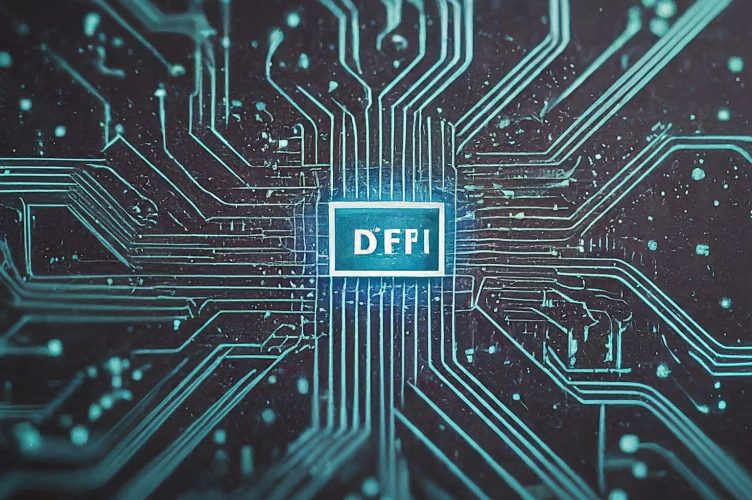Understanding Liquidity Pools:
liquidity pools have emerged as a pivotal innovation, transforming how assets are traded and managed. By leveraging blockchain technology and smart contracts, liquidity pools offer a decentralized, efficient, and inclusive alternative to traditional financial systems. This article explores the intricacies of liquidity pools, their benefits, key components, real-world applications, risks, and future developments.
What Are Liquidity Pools?
Liquidity pools are collections of funds locked in smart contracts on DeFi networks. They provide a source of liquidity for users to exchange and interact with various digital assets, eliminating the need for traditional order books by directly matching buyers and sellers within the protocol. These pools ensure continuous availability of assets for trading, lending, and other financial operations.
Participants contribute to a shared pool by depositing funds, which facilitates trading, lending, and other financial activities. This mechanism enhances market liquidity, reduces slippage, and allows for efficient price discovery. Additionally, liquidity pools enable users to earn passive income through yield farming and liquidity mining.
The Importance of Liquidity
Liquidity is the lifeblood of financial markets, denoting the ease with which an asset can be bought or sold without causing significant price adjustments. It ensures smooth market operations, reduces transaction costs, and lowers market volatility. Traditional financial markets rely on market makers and institutional investors for liquidity. However, DeFi platforms have introduced a decentralized alternative through liquidity pools, democratizing access to liquidity provision and promoting financial inclusion.
Key Concepts in Liquidity Pools
- Automated Market Makers (AMMs): AMMs are decentralized protocols that facilitate the creation and functioning of liquidity pools. They use mathematical algorithms to automatically execute trades between multiple assets, ensuring a balance between the supply of tokens in the pool. AMMs eliminate the need for traditional order books and intermediaries, enhancing accessibility and reducing costs.
- Liquidity Providers (LPs): LPs contribute assets to liquidity pools, ensuring the availability and stability of liquidity. In return, they receive transaction fees and other incentives, such as yield farming rewards or governance tokens. While liquidity provision can be profitable, it also entails risks such as impermanent loss, smart contract vulnerabilities, and market volatility.
How Liquidity Pools Work
- Pool Formation: Creating a liquidity pool involves writing a smart contract that defines its functionalities, selecting token pairs, and depositing initial funds. This process requires careful consideration of market demand, trading volume, and token economics to ensure fair prices and sufficient liquidity.
- Trading Mechanism: Liquidity pools utilize the constant product formula, as seen in platforms like Uniswap, to maintain pool balance and facilitate price discovery. However, slippage, the difference between expected and actual execution prices, can impact trades, especially when liquidity is limited.
- Fee Generation and Distribution: Trading fees are calculated and collected based on transaction volume or value. These fees are then distributed among liquidity providers proportionally, incentivizing their participation and maintaining market stability.
Types of Liquidity Pools
1. Constant Product Pools (AMMs):
- These are the most common type, relying on AMMs like the constant product formula (e.g., Uniswap, SushiSwap).
- They maintain a fixed product of the tokens within the pool, meaning the price adjusts based on the supply and demand of those tokens.
- This design offers simplicity but might lead to higher slippage for less common tokens.
2. Stablecoin Pools (e.g., Curve):
- Designed specifically for trading stablecoins, these pools aim to minimize slippage and price fluctuations.
- They often employ more complex algorithms to maintain peg stability between different stablecoins.
- This makes them ideal for swapping between pegged assets with minimal price impact.
3. Balancer Pools (Constant Weight or Smart Pools):
- These pools offer more flexibility compared to constant product AMMs.
- LPs can define custom weights for the composition of the pool, allowing for targeted risk management and potentially higher returns.
- This caters to advanced users who want more control over their liquidity provision strategy.
4. Liquidity Bootstrapping Pools (LBPs):
- These pools are specifically designed for launching new tokens.
- They create a gradually changing price curve as the pool sells tokens over time, allowing for price discovery and initial distribution of the new asset.
- This helps projects raise capital and distribute their tokens in a decentralized manner.
5. Hybrid Pools:
- Some platforms, like SushiSwap, offer hybrid models that combine characteristics of different pool types.
- They might integrate features like burning a portion of trading fees to create additional incentives for LPs.
- This caters to users seeking a combination of benefits from various pool designs.
Choosing the Right Pool:
The best liquidity pool for you depends on your goals and risk tolerance. Consider factors like:
- Type of assets: Are you providing liquidity for established tokens or a new project?
- Trading volume: Higher volume pools generally offer better returns but might have more competition.
- Fees and incentives: Compare trading fee structures and any additional rewards offered by the platform.
- Impermanent loss risk: Evaluate the potential price volatility of the assets in the pool.
By understanding these different types and carefully considering your options, you can make informed decisions when participating in liquidity pools within the DeFi ecosystem.
Benefits of Liquidity Pools
- Increased Liquidity: Liquidity pools aggregate assets from multiple participants, enhancing market depth and reducing price slippage. This ensures sufficient funds for trading and promotes market efficiency.
- Lowering Barriers to Entry: By democratizing access to financial markets, liquidity pools allow anyone to participate, regardless of economic background or geographic location. This inclusivity empowers retail investors to actively contribute liquidity and earn rewards.
- Liquidity Mining and Incentives: Liquidity mining programs incentivize users to contribute tokens to pools, offering rewards and promoting community participation. This symbiotic relationship fosters a vibrant DeFi ecosystem.
Risks and Considerations
- Impermanent Loss: Impermanent loss occurs when the value of assets in a liquidity pool fluctuates compared to holding them outside the pool. LPs can mitigate this risk through strategies like impermanent loss insurance and yield farming.
- Smart Contract Risks: Smart contracts, while revolutionary, are susceptible to coding errors and vulnerabilities. Regular audits and robust security measures are crucial to minimize risks and ensure contract integrity.
- Volatility and Market Risks: Price fluctuations can impact liquidity pools, leading to impermanent loss and reduced liquidity. LPs must employ risk management strategies such as diversification and active market monitoring to mitigate these risks.
Popular Liquidity Pool Protocols
Here’s a breakdown of each protocol, highlighting their key features and target users:
Foundational Leaders:
- Uniswap (v2 & v3): The undisputed leader, Uniswap offers a user-friendly interface and a simple AMM model (v2) for token swaps. Uniswap v3 caters to advanced users with concentrated liquidity options.
- SushiSwap (v2 & Shoyu): A fork of Uniswap, SushiSwap (v2) provides similar functionalities with additional rewards (SUSHI tokens) for LPs. Shoyu targets institutional investors with features like permissioned liquidity pools.
Stablecoin Specialists:
- Curve Finance: The go-to protocol for efficient stablecoin trading, Curve utilizes specialized AMMs to minimize slippage and maintain peg stability between different stablecoins. Ideal for users swapping large amounts of pegged assets.
Advanced User Options:
- Balancer: Known for its flexibility, Balancer allows customization of pool weightings for component tokens, appealing to advanced users seeking optimized returns and risk management strategies.
Layer 2 Innovators:
- PancakeSwap (BSC): A popular DEX built on the Binance Smart Chain (BSC), PancakeSwap offers AMM-based liquidity pools with attractive features like token lotteries and CAKE token rewards for LPs. Ideal for users seeking a user-friendly experience and potentially higher yields on the BSC.
Beyond Swaps:
- Aave: Primarily a lending and borrowing protocol, Aave also offers robust liquidity pools for various crypto assets. Users can earn interest by supplying assets to Aave’s pools, which fuel borrowing activities.
Emerging Frontiers:
- Convexity Protocol: This innovative protocol utilizes options and derivatives to enhance the liquidity and efficiency of DeFi markets.
User-Centric Solutions:
- Kyber Network: Kyber Network focuses on seamless token swaps and liquidity aggregation, improving user experience within DeFi.
Cross-Chain Liquidity:
- Bancor Protocol: Bancor offers a unique approach with its cross-chain liquidity pools, enabling efficient token conversions across different blockchains.
High-Performance Options:
- DeversiFi Protocol: DeversiFi focuses on providing high-speed, low-cost trading experiences through advanced technologies for optimized liquidity.
Choosing the Right Protocol:
The best protocol for you depends on your specific needs and risk tolerance. Consider factors like:
- Type of assets: Are you providing liquidity for established tokens or a new project?
- Trading volume: Higher volume pools offer better returns but might have more competition.
- Fees and incentives: Compare trading fee structures and any additional rewards offered by the platform.
- Impermanent loss risk: Evaluate the potential price volatility of the assets in the pool.
Real-World Applications
- Decentralized Exchanges (DEXs): Platforms like Uniswap have revolutionized trading by allowing direct token swaps without intermediaries, promoting financial inclusivity.
- Yield Farming Platforms: Compound Finance enables users to earn interest and borrow against their collateral, exemplifying the potential of yield farming.
- Decentralized Finance Applications: Aave’s innovative features, such as flash loans, expand DeFi’s capabilities, introducing new financial services.
- Cross-Chain Liquidity Pools: Thorchain facilitates cross-chain swaps, reducing reliance on centralized exchanges and promoting interoperability among blockchain networks.
The Future of Liquidity Pools: Innovation and Overcoming Challenges
Liquidity pools have revolutionized DeFi, but their journey is far from over. Here’s a glimpse into the exciting developments and lingering challenges on the horizon:
Emerging Innovations:
- Advanced AMMs: New AMM models are being developed to address current limitations. These models aim to minimize impermanent loss, improve price discovery, and cater to specific asset classes.
- Cross-chain Liquidity Pools: As the blockchain ecosystem expands, cross-chain liquidity pools will become increasingly crucial. These pools will enable seamless asset transfer and trading across different blockchains, fostering greater interoperability.
- Fragmented Liquidity Aggregation: Protocols are exploring ways to aggregate liquidity across various DEXs and DeFi platforms. This would create deeper liquidity pools, reducing slippage and improving overall efficiency.
- AI-powered Liquidity Management: Artificial intelligence (AI) could be leveraged to optimize liquidity provision strategies, dynamically adjusting pool compositions based on market conditions.
- Decentralized Insurance for Liquidity Providers: Mitigating impermanent loss is a major concern. Decentralized insurance solutions are being explored to protect LPs from potential losses due to price fluctuations.
Challenges to Address:
- Scalability and Efficiency: As DeFi adoption increases, liquidity pools might face scalability challenges. New solutions are needed to handle high transaction volumes without compromising efficiency.
- Security Concerns: Smart contract vulnerabilities remain a threat to DeFi protocols. Continuous audits and security best practices are essential for maintaining a secure environment for liquidity pools.
- Regulatory Landscape: Regulatory uncertainty surrounding DeFi could hinder the growth of liquidity pools. Clear and collaborative regulations are needed to foster innovation while protecting users.
- Centralized Exchange Competition: Centralized exchanges might adapt and offer DeFi-like features, potentially posing competition to DEXs and liquidity pools.
The Road Ahead
The future of liquidity pools hinges on addressing these challenges and embracing innovation. By developing advanced AMMs, enhancing security, and fostering a welcoming regulatory environment, liquidity pools can solidify their position as the backbone of a thriving DeFi ecosystem. As the technology matures, expect to see greater user adoption, deeper liquidity, and ultimately, a more accessible and efficient financial system for everyone.
Conclusion
Liquidity pools have revolutionized DeFi, providing a decentralized and efficient solution to liquidity challenges. They enhance market stability, facilitate seamless trading, and offer passive income opportunities. As the DeFi ecosystem matures, liquidity pools will likely become more sophisticated, offering innovative features and strategies to optimize capital efficiency. However, participants should approach liquidity pools with caution, conducting thorough research and understanding associated risks. By actively engaging with these decentralized financial instruments, individuals can contribute to the growth of the DeFi ecosystem and potentially reap significant rewards.





